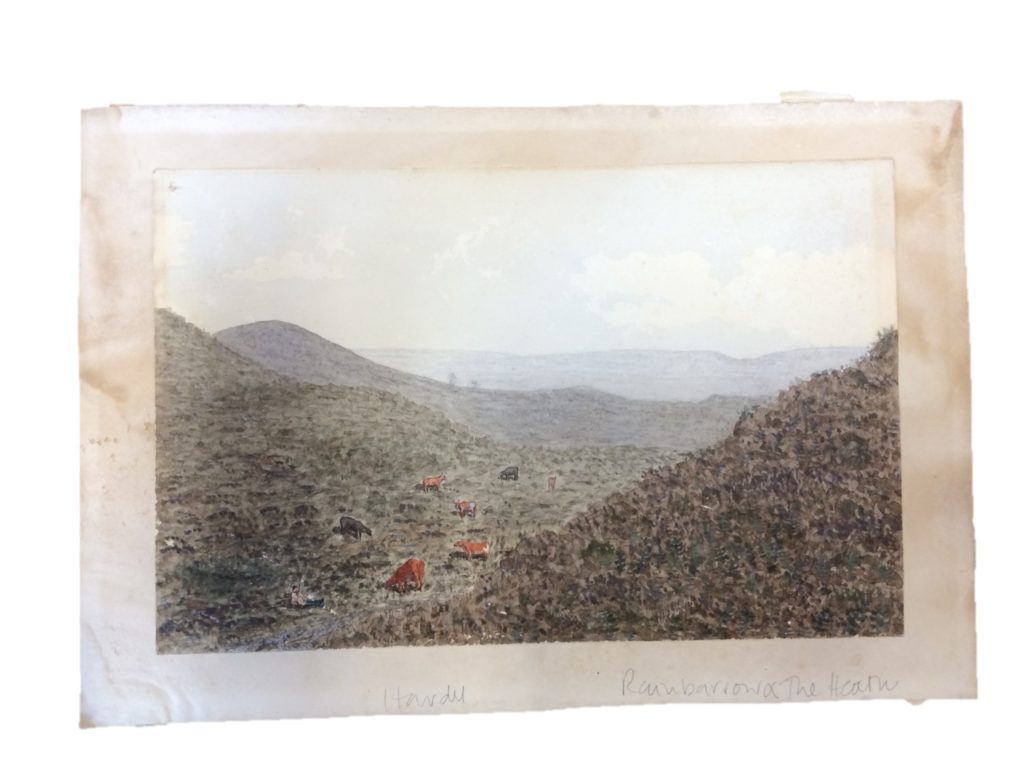Home » Our work » Exhibitions » Thomas Hardy exhibition » Hardy exhibition – Wiltshire Museum
Venture into the ancient landscape of Wiltshire, to see how the burial mounds and beliefs of Wessex seeped into Thomas Hardy’s writing. Old beliefs died hard and Hardy’s plots are set against a background of superstition.
On loan from: The British Library
Tess of the D’Urbervilles is one of Hardy’s best known novels. The handwritten manuscript is covered with Hardy’s scribbles and re-writes, including a change to the title of the book. Fittingly, it will sit in Wiltshire Museum, less than an hour’s drive from Stonehenge where the climactic scene of the novel is set.
The manuscript will be displayed alongside a moonlit painting of Stonehenge, as well as Hardy’s comments on the proposal to move Stonehenge to America in the 1920s.
Our star loans were made possible by support from the Weston Loan Programme with Art Fund.

Hardy was a man torn between two worlds – the ancient past and his life in a time of rapid scientific advances. You can see this conflict by comparing two fascinating items. One is his hand-annotated copy of Einstein’s new theories. The other is his ‘Book of Facts’, in which he recorded old beliefs and superstitions.
Hardy wove these old ways of life into his plots, and also campaigned to maintain our ancient landscapes.


For details of opening times, admission prices, facilities, directions, etc, please visit Wiltshire Museum’s website.
Our star loans were made possible by support from the Weston Loan Programme with Art Fund.
| Cookie | Duration | Description |
|---|---|---|
| cookielawinfo-checkbox-analytics | 11 months | This cookie is set by GDPR Cookie Consent plugin. The cookie is used to store the user consent for the cookies in the category "Analytics". |
| cookielawinfo-checkbox-functional | 11 months | The cookie is set by GDPR cookie consent to record the user consent for the cookies in the category "Functional". |
| cookielawinfo-checkbox-necessary | 11 months | This cookie is set by GDPR Cookie Consent plugin. The cookies is used to store the user consent for the cookies in the category "Necessary". |
| cookielawinfo-checkbox-others | 11 months | This cookie is set by GDPR Cookie Consent plugin. The cookie is used to store the user consent for the cookies in the category "Other. |
| cookielawinfo-checkbox-performance | 11 months | This cookie is set by GDPR Cookie Consent plugin. The cookie is used to store the user consent for the cookies in the category "Performance". |
| viewed_cookie_policy | 11 months | The cookie is set by the GDPR Cookie Consent plugin and is used to store whether or not user has consented to the use of cookies. It does not store any personal data. |

Males great bustards perform spectacular courtship displays, gathering at a ‘lek’ or small display ground to try to impress the females.
The great bustard has a dignified slow walk but tends to run when disturbed, rather than fly.
The hen-bird on display at The Salisbury Museum was one of the last great bustards to be eaten in the town!